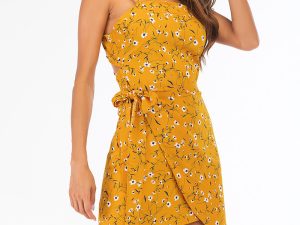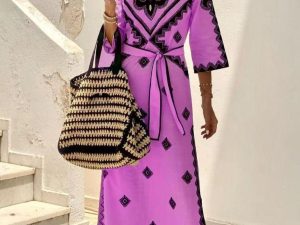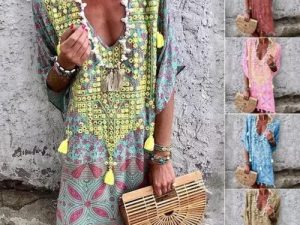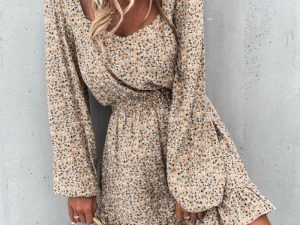Free shipping on all orders above $100
Dresses for Community Theater: Best Tips for Authentic Costuming on a Budget

Table of Contents
Shop Boho Dresses
When it comes to community theater, finding the perfect dress can make all the difference in bringing a character to life. At Boho 70, we offer a large selection of clothing that caters to every role, from classic period pieces to modern-day ensembles. Whether you’re playing a Victorian heroine or a 1920s flapper, our dresses will help you step into character with confidence.
Choosing the right dress isn’t just about aesthetics; it’s also about comfort and practicality. Our collection at Boho 70 ensures you look the part while feeling at ease during those long rehearsals and performances. With our range of styles and sizes, you’ll find exactly what you need to shine on stage.
Key Takeaways
- Character Development: Costumes help actors fully embody their roles, reflecting the character’s era, personality, and socioeconomic status.
- Visual Storytelling: Well-chosen costumes provide immediate context, enhancing the storytelling by defining the period, tone, and location without relying on dialogue.
- Authenticity: Historically accurate and detailed costumes lend credibility to the production, making stories more believable and engaging for the audience.
- Sourcing Options: Community theaters can find costumes through local thrift stores, rentals, or DIY sewing, ensuring a wide array of styles for different periods and themes.
- Budgeting: Effective strategies like exploring thrift stores, organizing community fundraisers, and seeking local sponsorships help manage costume budgets efficiently.
- Fabric Choices: Choosing the right fabric, such as cotton for versatility, polyester for vibrant colors, or velvet for a regal look, is essential for creating impactful theater costumes.
Importance Of Costuming in Community Theater
Costuming plays a crucial role in community theater for several reasons:
- Character Development
Costumes help actors embody their characters. Authentic attire, such as period dresses or contemporary outfits, enables performers to step fully into their roles by reflecting the era, personality, and socioeconomic status of their characters. - Visual Storytelling
Costumes contribute to visual storytelling. Viewers gain immediate context through clothing, setting the tone, period, and location without relying solely on dialogue or sets. - Audience Engagement
Engaging audiences requires visually appealing costumes. Well-designed garments capture attention and hold interest, enhancing viewers’ overall experience. - Creating Atmosphere
Costuming adds to the atmosphere. Coordinated costumes create cohesive visual narratives, setting mood and context for each scene. - Production Authenticity
Costumes add authenticity to productions. Historically accurate garments lend credibility to plays set in specific periods, making stories more believable.
For a vast selection of chic, high-quality costumes, explore our offerings at Boho 70. Discover the perfect pieces for your next community theater project and bring your characters to life.
Types Of Dresses for Community Theater
Choosing the right dress for a community theater production significantly impacts the authenticity and overall quality of the performance. Let’s dive into some types of dresses that cater to various themes and eras in community theater productions.
Period Costumes
Period costumes capture the essence of historical settings. These dresses often feature details like intricate embroidery, specific fabric choices, and accurate cuts that reflect the period. For example, a Victorian-era production might require dresses with high necklines, corsets, and full skirts. Costuming plays a vital role in immersing the audience in the time frame. Ensuring actors wear authentic, detailed clothing helps bring characters to life.
Contemporary Dresses
Contemporary dresses reflect modern styles. They are versatile and easy to source, fitting various settings from casual to formal scenes. For a contemporary play, characters might wear anything from sleek cocktail dresses to everyday casual wear, depending on the scene’s context. These dresses help keep the storyline relatable to today’s audience, reflecting current fashion trends.
Fantasy and Sci-Fi Costumes
Fantasy and sci-fi costumes allow for creativity and imagination. These dresses often include unique elements like futuristic materials, elaborate accessories, and vibrant colors. Think of a character from a space opera needing a shiny, metallic dress or a fairy-tale princess in an elaborate, shimmering gown. These costumes help transport the audience to otherworldly settings, enhancing the magical or futuristic atmosphere of the play.
Sourcing Dresses for Community Theater
Sourcing dresses for community theater involves a range of resources. Whether looking for historical accuracy or modern flair, there are several ways to find the perfect costumes.
Local Thrift Stores
I recommend checking local thrift stores first. They usually have a wide variety of styles at affordable prices. For example, you might find vintage dresses, period-specific pieces, or unique garments perfect for fantasy roles. Frequent visits increase the chances of discovering new arrivals. Work with store managers to possibly hold onto specific items you might need.
Costume Rentals
For obtaining high-quality, era-specific costumes, consider costume rentals. These shops specialize in theatrical clothing and offer an extensive collection. Rental shops often carry everything from Elizabethan gowns to modern business attire. Renting can be cost-effective for productions with tight budgets. Additionally, rental shops provide professional fittings and alterations, ensuring the dress fits perfectly.
DIY and Sewing Tips
For custom or hard-to-find dresses, DIY and sewing are great options. Basic sewing skills can transform simple fabric into detailed costumes. Online tutorials and sewing patterns provide guidance on creating period-accurate dresses or whimsical fantasy attire. Use materials such as old bedsheets, curtains, and repurposed clothing to cut costs. Collaborate with local sewing groups for additional support.
Budgeting for Theater Costumes
Managing the budget for community theater costumes is crucial. It’s essential to allocate funds wisely and ensure every penny counts.
Cost-Effective Strategies
- Thrift Stores: Explore local thrift stores. They often have a variety of dresses suitable for different roles and periods.
- DIY Sewing: Create costumes by sewing your own. It’s perfect for custom pieces and can save money on unique designs.
- Costume Rentals: Rent high-quality costumes from professional shops. This option provides access to well-made, era-specific attire for a reasonable fee.
- Community Fundraisers: Organize local events like bake sales or car washes. These activities engage the community and raise funds.
- Online Crowdfunding: Use platforms like GoFundMe. They allow you to reach a wider audience and gather donations.
- Local Sponsorships: Approach local businesses for sponsorships. In return, they get advertising and community recognition.
Popular Fabrics and Materials
Choosing the right fabrics and materials for community theater costumes is essential. Different fabrics offer unique benefits in terms of appearance, durability, and comfort.
- Cotton
- Cotton is versatile and breathable. It’s perfect for period pieces and casual wear, making it a staple fabric in theater costumes. Examples include peasant blouses and simple tunics.
- Polyester
- Polyester resists wrinkles and maintains color well. It’s ideal for elaborate costumes that require vibrant colors and intricate designs. Polyester materials work well for dance costumes and fantasy-themed outfits.
- Silk
- Silk adds elegance and luxury. It’s suitable for high-status characters and regal attire. Historical dramas and formal scenes benefit from incorporating silk gowns and robes.
- Wool
- Wool offers warmth and texture. It’s commonly used for cold-weather costumes and heavy outerwear. Examples include cloaks, jackets, and winter garments for outdoor scenes.
- Denim
- Denim provides durability and a rugged look. It’s useful in modern, urban, or Western-themed productions. Denim jeans, jackets, and overalls are often used in community theater.
- Linen
- Linen is lightweight and breathable. It’s ideal for summer costumes and historical pieces set in warmer climates. Linen suits and dresses provide an authentic look and comfort.
- Velvet
- Velvet delivers a rich, textured appearance. It’s perfect for regal and dramatic costumes. Capes, gowns, and theatrical robes often feature velvet for added visual impact.
- Tulle
- Tulle adds volume and a whimsical touch. It’s frequently used in ballet and fairy-tale productions. Tulle skirts, veils, and wings enhance the ethereal quality of costumes.
Exploring these fabric options can elevate the visual appeal of your theater production. Find a wide selection of chic clothing over at our online store, Boho 70. Click here to browse our unique collection and dress your characters to perfection.
Conclusion
Costuming in community theater is a vital element that enhances character development and visual storytelling. By incorporating collections like the Boho 70’s, we can achieve a balance of authenticity, comfort, and practicality. Budgeting strategies such as thrift shopping, DIY sewing, and rentals offer cost-effective solutions. Fundraising through community events and online crowdfunding can further support costume budgets. Choosing the right fabrics ensures that costumes are not only visually appealing but also suitable for various types of productions. Investing time and effort in these areas will undoubtedly enrich the overall theatrical experience for both performers and audiences.









